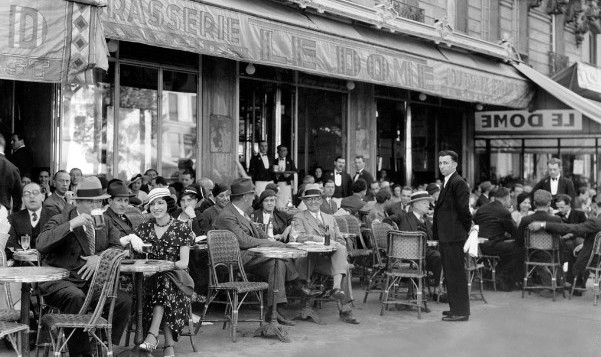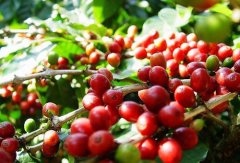French Coffee Culture World Fine Coffee
French people drink coffee slowly, taste it carefully, read books and newspapers, talk about it, and "soak" for most of the day. Because of this traditional and unique coffee culture, French coffee resting places can be found all over the streets, under the shade of trees, by the side of the road, by the square, on the riverbank, on cruise ships, on street balconies, and even on the Eiffel Tower. And the form, style, size are not limited to one style, there are coffee shops, restaurants, halls, rooms.
The most popular and romantic ones are those open-air cafes, which are almost a portrayal of French life. Many open-air cafes occupy many public places, such as a corner of the square and sidewalks on the streets, even on the bustling Champs-Elysees, where colorful umbrellas have become a unique street view of Paris. The chairs of the cafe are almost all arranged facing the road, sitting in this deliberately set auditorium, the horse road in front of is the big stage where the script will never be repeated.
In addition to those open-air cafes that look up to the sky, there is no shortage of magnificent or simple and elegant cafes in about 170000 cafes in France. Especially in Paris, some cafes are themselves legendary places of interest. In the old dynasty of the Middle Ages, the focus of French cultural life was on the court. In the age of enlightenment in the 18th century, the focus of culture began to shift to various salons, clubs and cafes. The LeProcoPe Cafe in Latin, for example, is associated with the French Revolution that influenced the world more than 200 years ago. Voltaire, Rousseau and Diderot, the thinkers of the 18th century European Enlightenment, as well as Robespierre, Danton and Mara, the three heroes of the Great Revolution, were all regulars here. Several works by Voltaire and Diderot's world's first encyclopedia were written here, as well as the red, white and blue tricolor hats that symbolized the Revolution for the first time.

Important Notice :
前街咖啡 FrontStreet Coffee has moved to new addredd:
FrontStreet Coffee Address: 315,Donghua East Road,GuangZhou
Tel:020 38364473
- Prev

Boutique Coffee Guatemala Coffee Manor Rainforest Coban
Koban in the rainforest is cloudy, rainy and cool all the year round. The vast majority of Koban coffee in the rainforest is grown in the obviously undulating and foggy mountains of the region and is deeply influenced by limestone and clay in the Atlantic basin. Koban has two seasons: the rainy season and the rainy season. [characteristics] obvious fresh fruit flavor, balanced mellow thickness, pleasant aroma.
- Next
Boutique coffee Japanese coffee culture
The first coffee spread to Japan was Nagasaki in the Yuanlu period. And people officially accepted it from the Meiji era. Now let's take a look at the coffee history of Japan. At first, the Japanese were not used to the coffee shop opening one after another in Western Europe, when the literature and art of coffee culture were in full bloom, while Japan was locked up in the Edo era.
Related
- Beginners will see the "Coffee pull flower" guide!
- What is the difference between ice blog purified milk and ordinary milk coffee?
- Why is the Philippines the largest producer of crops in Liberia?
- For coffee extraction, should the fine powder be retained?
- How does extracted espresso fill pressed powder? How much strength does it take to press the powder?
- How to make jasmine cold extract coffee? Is the jasmine + latte good?
- Will this little toy really make the coffee taste better? How does Lily Drip affect coffee extraction?
- Will the action of slapping the filter cup also affect coffee extraction?
- What's the difference between powder-to-water ratio and powder-to-liquid ratio?
- What is the Ethiopian local species? What does it have to do with Heirloom native species?

